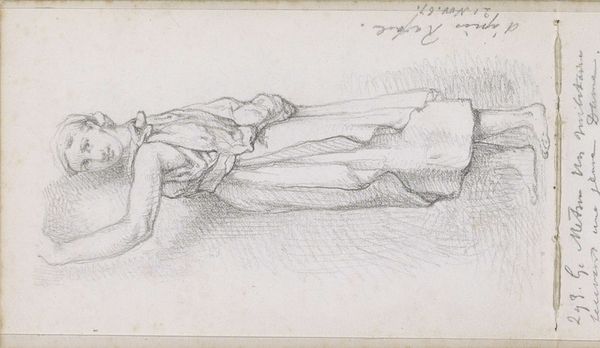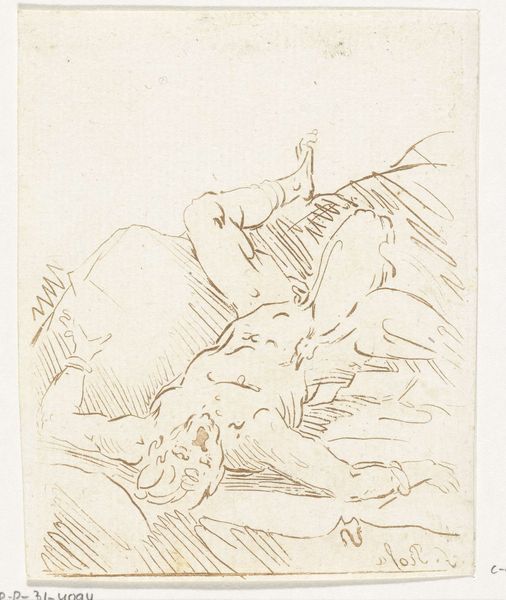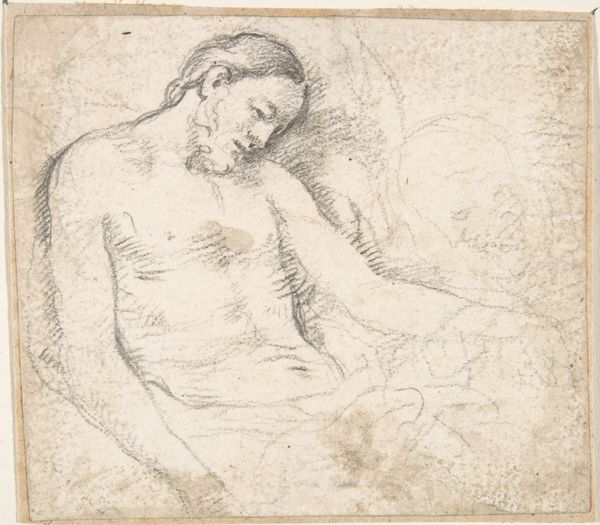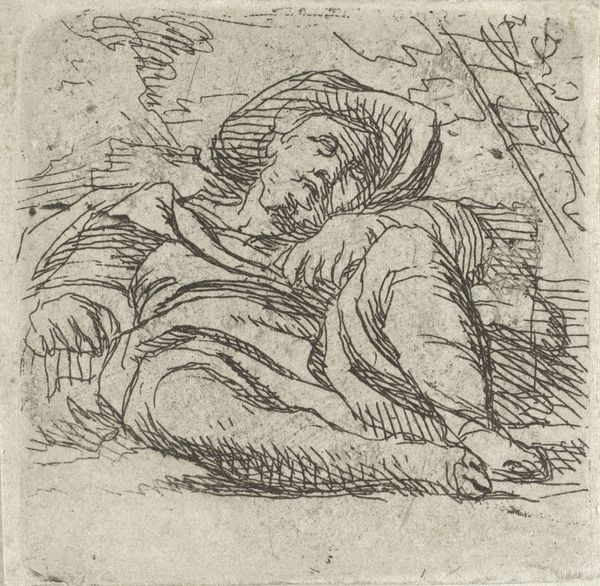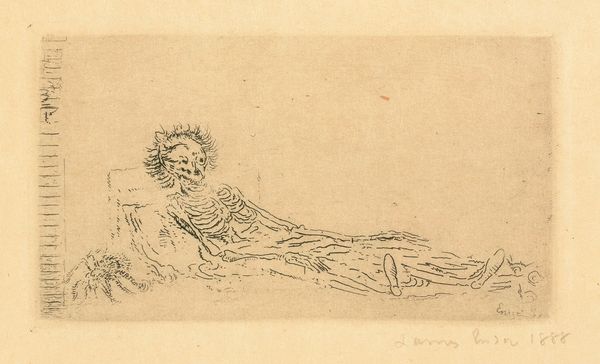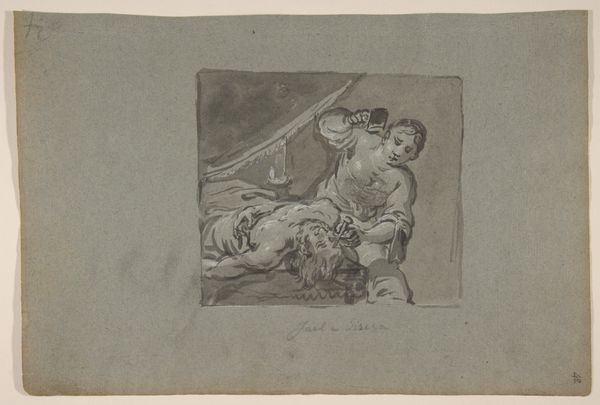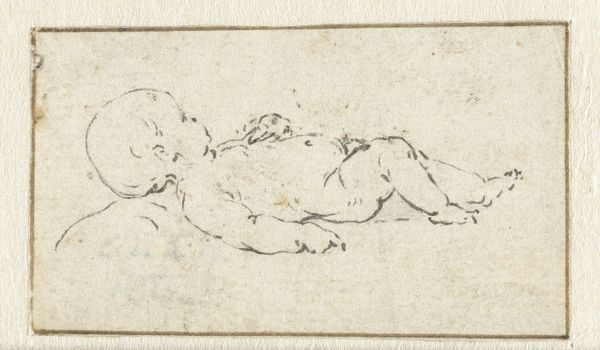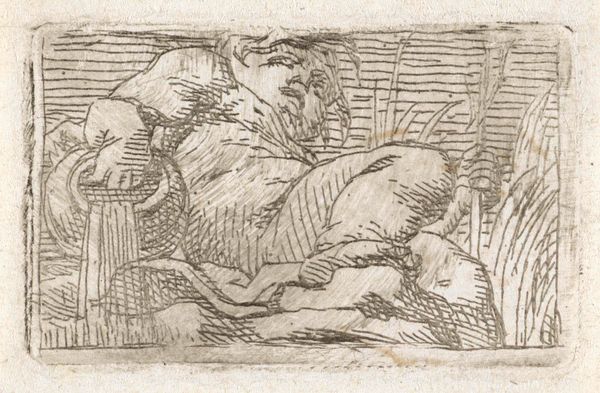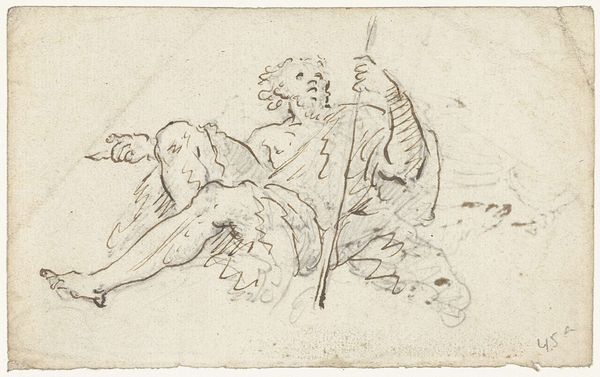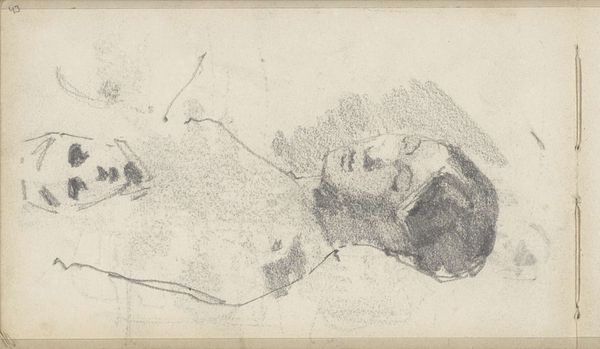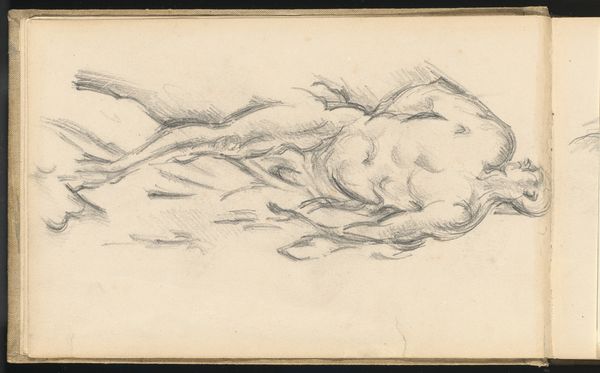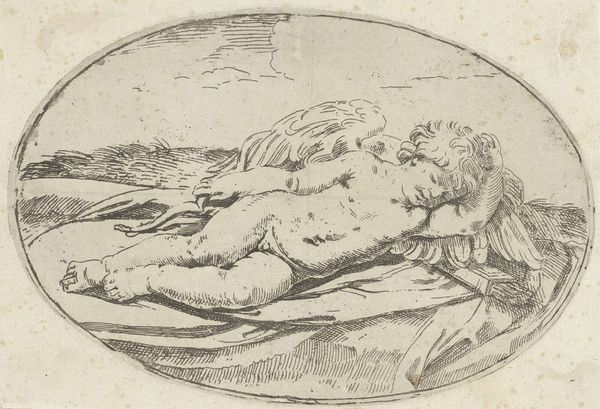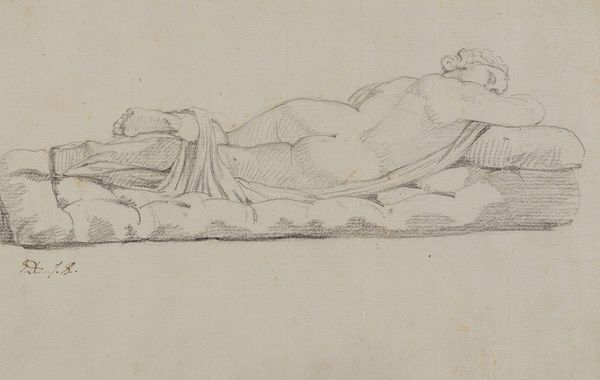
Studieblad met een voet, een slapende vrouw en een liggend kind 1618 - 1655
0:00
0:00
cornelisschut
Rijksmuseum
drawing, print, etching
#
drawing
#
baroque
# print
#
etching
#
pencil sketch
#
figuration
#
nude
Dimensions: height 28 mm, width 98 mm
Copyright: Rijks Museum: Open Domain
Curator: Here we have "Study Sheet with a Foot, a Sleeping Woman, and a Lying Child," created by Cornelis Schut sometime between 1618 and 1655. It’s an etching, currently held at the Rijksmuseum. Editor: The first impression is striking. There’s a tenderness in the curves and forms. The shading makes it look very dreamlike. Are those biblical references that you see in this artwork? Curator: Perhaps indirectly. Schut worked within the Baroque style, which, even when depicting secular scenes, often employed dramatic lighting and emotional intensity found in religious painting. It could just be a domestic scene he’s rendered in a timeless way. Editor: What about the isolated foot? Does it bear some allegorical meaning or some other form of significance in this piece? Curator: The foot might simply be a study. Artists often made studies of individual body parts to refine their understanding of anatomy, proportion, and how light plays across the human form. It was common to make studies of this sort, given the institutional conventions in the era to only display idealized nude subjects. Editor: Interesting, I am thinking about how those nudes are traditionally viewed in art. Maybe there’s a broader commentary about vulnerability here, captured not only through nudity but the state of sleep, alluding to the figures surrendering control. Curator: It's compelling to see it through that lens. Baroque art aimed to evoke emotional responses in the viewer, so it's possible Schut was deliberately playing with themes of vulnerability and innocence. The print would be viewed, discussed, and its imagery absorbed into the cultural memory. Editor: And those memories accumulate meaning over time, which is how symbols evolve and change. The recurring motif of repose contributes to its effect, and so viewers will consider and perhaps reinterpret meanings of innocence and vulnerability based on their own evolving experience. Curator: It's this very process of reinterpretation that keeps these works relevant, connecting past artistic practices to the evolving socio-political concerns of our time. The ability of artworks to acquire ever-shifting meaning guarantees the piece and artist’s longevity. Editor: Yes, what began as a sketch from life gains this extraordinary life of its own through both the image and its reinterpretation in society. It makes one appreciate both the initial skill and enduring presence of Schut’s work.
Comments
No comments
Be the first to comment and join the conversation on the ultimate creative platform.
